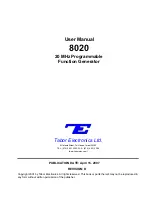
19
6.1 Piping Design
•
Pipe-work shall be installed in a manner which prevents drainage of liquid into the compressor and ensures
adequate oil return
•
During operation, temperature of gas pipe and liquid pipe shall be over-heating or over-cooling extremely.
Therefore, it is necessary to carry out insulation; otherwise it shall debase the performance of unit and burn
compressor.
•
The burning performance of the insulation material should be over 120°C.
•
The insulation materials should be also chosen according to the local law.
•
The thickness of insulation layer shall be above 10mm.If in hot or wet environment place, the layer of insulation
should be thicker accordingly
•
Both the liquid and vapour line shall be insulated
•
Be sure not bind the insulation material over-tight, it may extrude out the air in the material to cause bad insulation
and cause easy aging of the material.
•
Pipes should be run as directly as possible between indoor and outdoor units
•
If the indoor coil is located above the condensing unit the suction line shall have a loop at the evaporator
outlet to prevent refrigerant drainage into the compressor during off cycle (see Fig. 17)
•
If the evaporator is located below the condensing unit, then the suction riser shall be U-Trapped at 3m above
ground level (see Fig 17)
•
Avoid burying pipes below ground. If necessary, they shall be insulated and encased in a PVC pipe, sealed at
both ends where the pipe exits above ground. The buried distance shall not exceed 5 metres and a liquid line
solenoid valve, interlocked with the compressor, shall be located adjacent to the indoor unit.
•
Care should be taken if running pipe-work within wall cavities as this may lead to transmission of refrigerant noise
into the occupied space. The use of mufflers or oil separator can help reduce potential pulsation in the discharge
line
Fig. 17 – Piping Diagram
















































